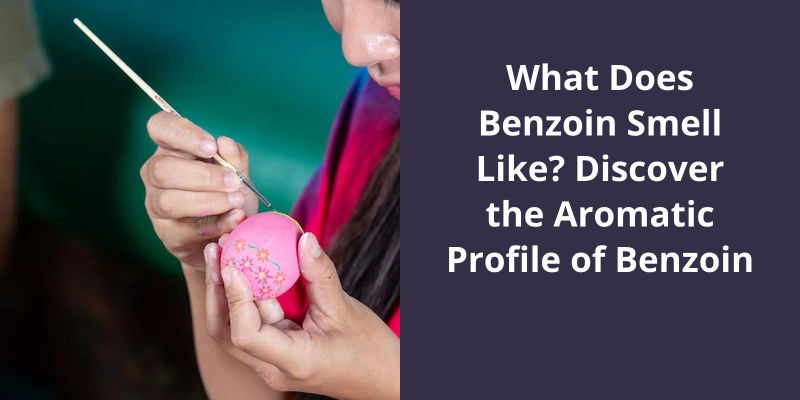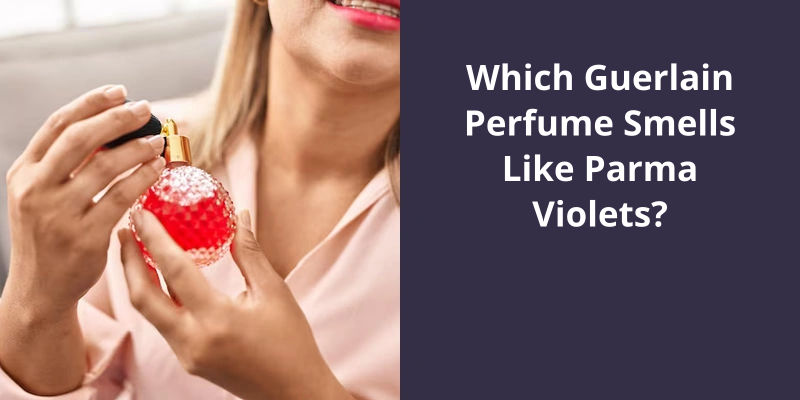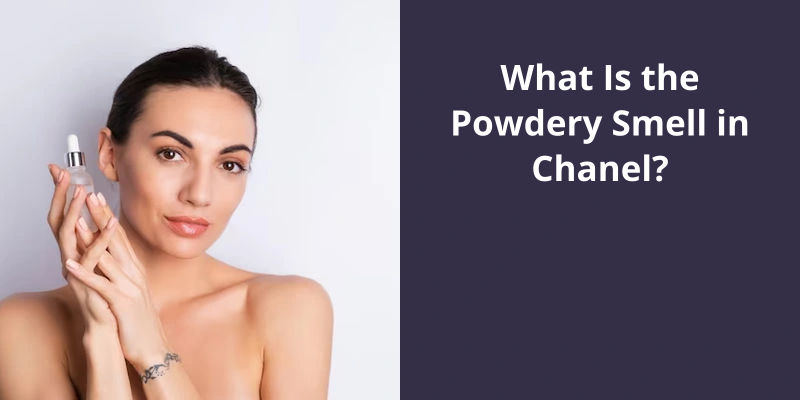Obtained from the bark of the styrax tree, this rich gum resin has a warm, sweet, and balsamic scent that’s reminiscent of vanilla and caramel. Known for it’s healing and soothing properties, benzoin has been used in traditional medicine, perfumery, and incense making for centuries.

What Scent Notes Does Benzoin Have?
In fact, some of the other notes that are often associated with benzoin include cinnamon, nutmeg, and even hints of leather or tobacco. This range of scents makes it a popular ingredient in many different types of fragrances and perfumes.
One of the benefits of benzoin as a fragrance ingredient is it’s staying power. It’s sweet, warm scent can linger on the skin for hours or even days, making it a great base note for a perfume. This is because benzoin is a resin, which means it’s heavier and slower to evaporate than some other fragrance ingredients.
Benzoin is also known for it’s calming, grounding effects. It’s often used in aromatherapy and meditation practices for it’s ability to create a peaceful atmosphere. It’s rich, comforting scent can help relieve stress and anxiety, making it a popular choice for diffusers and candles.
History and Traditional Uses of Benzoin in Different Cultures
- Benzoin has been used for thousands of years in traditional Chinese medicine as a remedy for respiratory issues, such as coughs and asthma.
- In Indian Ayurvedic medicine, benzoin is used to treat arthritis pain and skin conditions like eczema and psoriasis.
- In ancient Egypt, benzoin was used in embalming and as incense in religious ceremonies.
- During the Middle Ages in Europe, benzoin was used to treat wounds and other skin ailments.
- In some cultures, benzoin resin is burned as incense to purify the air and promote relaxation.
- Benzoin is also commonly used as a fragrance in perfumes, soaps, and other cosmetic products.
Now that we’ve explored the aroma profile of benzoin, let’s take a closer look at how this resinous scent can be harmoniously combined with other fragrances. Whether you’re creating a perfume blend or simply looking for complementary scents to use in your home, there are many options to choose from that can enhance the warm, sweet and creamy notes of benzoin.
What Smells Good With Benzoin?
Benzoin is a highly sought-after ingredient in the perfume industry because of it’s beautiful, warm aroma. However, one of the best things about it’s that it blends exceptionally well with other fragrances. For instance, benzoin and frankincense make a beautiful pair. The combination of the sweet, creamy benzoin with the spicy, earthy frankincense results in a complex, intriguing scent that’s perfect for autumn and winter.
Another popular pairing is benzoin with citrus. Lemon and bergamot, in particular, work well with benzoin. The sharp, fresh citrus notes provide a perfect counterpoint to the warmth of the benzoin, creating a bright, sunny fragrance that’s ideal for spring and summer. Similarly, benzoin and orange make a great combination, a warm and inviting citrus scent, perfect for colder months.
Patchouli and benzoin are another popular pairing. Patchouli, with it’s rich, earthy scent, pairs perfectly with the sweetness of the benzoin. This pairing results in a warm, earthy, and slightly spicy scent: perfect for use in perfumes, incense, and body care products.
Finally, myrrh and benzoin are a match made in heaven. Both resins with deep, rich, balsamic scents, they complement each other perfectly. When used together, they create a warm, intoxicating scent that’s both luxurious and comforting, making them popular ingredients in high-end perfumes and candles.
It’s warm, creamy scent pairs well with a wide range of other fragrances, from citrus to floral to spicy, and can be used year-round to create unique, luxurious scents.
Source: Benzoin Essential Oil – Wellington Fragrance
Siamese benzoin isn’t only known for it’s aromatic smell but also for it’s unique taste. Despite being romantic, it can be bitter and biting. In addition, when chewed, it becomes malleable and plastic-like. It’s distinct note of vanillin adds to it’s pleasant and sweet balsamic odor.
What Does Siamese Benzoin Smell Like?
Siamese benzoin, also known as Styrax tonkinensis, is a type of resin that’s obtained from a tree native to Southeast Asia. It’s been used for centuries in traditional medicine, and as an ingredient in incense and perfumes. The resin exudes from the tree bark after it’s been injured by tapping or cutting. The resulting resin has a unique and distinct aroma that’s sought after by many fragrance enthusiasts.
The fragrance of Siamese benzoin is complex and multi-layered. It’s a rich and sweet balsamic scent with a distinct note of vanillin, which gives it a smooth and creamy quality. The aroma also has a hint of spice, with notes of cinnamon and cloves that add warmth and depth to the fragrance. When burnt, the resin produces a thick smoke that adds to the sensory experience of the fragrance.
In addition to it’s pleasant aroma, Siamese benzoin is known for it’s medicinal properties. It’s been used for centuries to treat a variety of conditions, such as respiratory problems, skin irritation, and wounds. The resin contains a number of active compounds that have anti-inflammatory, anti-bacterial, and anti-fungal properties. These compounds help to soothe and heal the skin, and can also help to ease respiratory symptoms.
When chewed, Siamese benzoin becomes plastic and sticky. The taste of the resin is somewhat bitter and biting, with a romantic quality that’s reminiscent of old-world fragrances. At the same time, it’s an acrid quality that can be overpowering for some people. For this reason, the resin is generally not consumed orally, but is instead used topically or as an ingredient in fragrances and other products.
It’s rich and complex aroma is beloved by fragrance enthusiasts, while it’s medicinal properties continue to be valued by alternative medicine practitioners.
What Are Some Other Natural Resins and Fragrances That Are Commonly Used in Incense and Perfumes?
- Frankincense
- Myrrh
- Benzoin
- Copal
- Dammar
- Dragon’s Blood
- Olibanum
- Sandalwood
- Agarwood (Oud)
- Cedarwood
- Patchouli
- Vetiver
- Rose
- Vanilla
- Jasmine
- Lavender
- Bergamot
Now that we know what benzoin powder is, let’s take a closer look at it’s benefits and how it can be used beyond fragrance fixative in soap.
What Is Benzoin Powder Good For?
Benzoin powder is also known for it’s anti-inflammatory and antiseptic properties. When applied topically, it can help soothe irritated skin and provide relief from itchiness and rashes. It’s particularly effective in treating conditions like eczema, psoriasis, and dermatitis. Moreover, benzoin powder can also help in reducing redness and swelling associated with insect bites and stings.
Apart from it’s medicinal benefits, benzoin powder is also used in cooking as a flavoring agent. It’s sweet, vanilla-like flavor makes it a popular choice for adding a unique taste to desserts, baked goods, and beverages. In fact, it’s an essential ingredient in some traditional recipes like the French almond macaron.
Furthermore, benzoin powder has been used in aromatherapy for centuries due to it’s calming and relaxing properties. It’s known to help reduce stress and anxiety and promote better sleep. You can add a few drops of benzoin essential oil to your diffuser or use it in a massage oil to experience it’s aromatherapy benefits.
It’s natural and organic properties make it a safer and healthier alternative to synthetic chemicals often found in commercial products. Whether youre a soap maker, a cook, or a wellness enthusiast, benzoin powder is definitely worth considering.
When we talk about aromatic substances, benzoin and myrrh are two of the most commonly compared. With their similar sweet and woody scents, it’s no wonder that they’re often mistaken to be the same. However, while they may share some similarities, they’re actually two separate kinds of resin with distinct properties and uses. Let’s take a closer look at each of them and what sets them apart.
Is Benzoin the Same as Myrrh?
Benzoin and myrrh are both fragrant resins derived from trees, but they come from different species of plants. Benzoin is extracted from the bark of the Styrax tree, while myrrh comes from the sap of the Commiphora tree. Although they’re distinct substances, they share a similarity in their use as incense in traditional cultures.
Benzoin has been used in perfumery and medicine for centuries. It’s a sweet vanilla-like fragrance and has been known to have antiseptic properties. In traditional Chinese medicine, it’s used to treat coughs and other respiratory ailments. It’s also said to have a calming effect on the mind and to promote relaxation.
Myrrh, on the other hand, has a deeper, richer fragrance that’s often described as musky or earthy. It’s been used in religious rituals and as a medicine for thousands of years. In ancient Egypt, myrrh was used in the embalming process and was believed to have powerful healing abilities. It’s also been used to treat a variety of ailments, including wounds, infections, and digestive issues.
Although benzoin and myrrh aren’t the same substance, they share some similarities in their use and properties. Both have been used as incense in ceremonial and religious settings, and both have been used medicinally for their antibacterial and anti-inflammatory properties. They’ve also been used in perfumery for their pleasant fragrances.
Now that we’ve learned about the common names of benzoin, let’s take a deeper dive into it’s history, properties, and uses. Benzoin has been used in various fields, such as medicine, cosmetics, and aromatherapy. It’s a rich cultural significance and has been used for centuries in different parts of the world. So, let’s explore this versatile natural substance and discover what makes it so special.
What Is the Common Name of Benzoin?
Benzoin is a resin that’s extracted from the bark of several species of trees. The resin is usually harvested from trees that are at least six years old, and it’s typically collected in the late winter or early spring when the bark is most pliable. Once the resin has been gathered, it’s allowed to harden into solid chunks, which can then be stored indefinitely.
The primary use for benzoin resin is in the manufacturing of incense, which is burned for it’s pleasant aroma. The resin is also used in perfumes, as a flavoring agent in food and beverages, and as a natural preservative in pharmaceuticals. Because benzoin is a natural product, it’s a variety of therapeutic properties, including anti-inflammatory and antiseptic properties.
Although benzoin resin is generally considered safe, it can cause allergic reactions in some people. It’s also flammable, and should be stored in a cool, dry place away from heat and flames. Additionally, benzoin resin shouldn’t be used by pregnant or nursing women, as it can cause contractions of the uterus.
With it’s beneficial properties and pleasant aroma, it’s no wonder that benzoin has remained a popular natural product for centuries.
Conclusion
In conclusion, the distinct aroma of benzoin is one that’s both unique and captivating, a scent that’s unmistakably sweet and smooth, similar to the essence of vanilla. The resin's origin, derived from the bark of styrax trees, only adds to it’s natural allure, both from the exotic location of it’s growth and the sight of it’s production.





